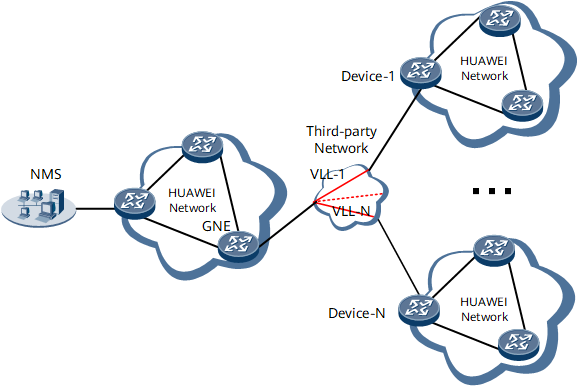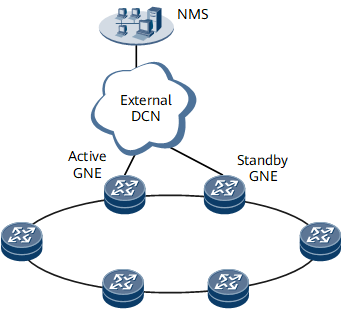Application Scenarios for DCN
DCN Application
During network deployment, every network element (NE) must be configured with software and commissioned after hardware installation to ensure that all NEs can communicate with each other. As a large number of NEs are deployed, on-site deployment for each NE requires significant manpower and is time-consuming. In order to reduce the on-site deployment times and the cost of operation and maintenance, the DCN can be deployed.
In Figure 1, to improve reliability, active and standby GNEs can be deployed. If the active GNE fails, the NMS can gracefully switch this function to the standby GNE.
DCN Traversal over a Third-Party Layer 2 Network
Figure 2 DCN traversal over a third-party Layer 2 network


- A DCN VLAN group is configured on the GNE, and the VLAN ID of the Dot1q termination subinterface is the same as the DCN VLAN ID of the main interface.
- The GNE sends DCN negotiation packets to VLANs in the DCN VLAN group.
- The DCN negotiation packets are sent to different leaf nodes through VLLs.
- NEs learn the DCN VLAN ID sent by the GNE and establish DCN connections with the GNE.
